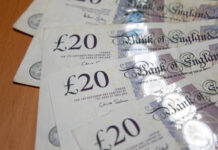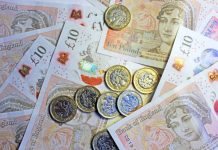Markets
Yesterday, trading for the new week took a rather slow start, with little ‘consistency’ across markets. There were few important economic data in Europe and the US. At least for now, US equity markets left worries about the (global) impact of the corona virus behind. A late session jump higher resulted in new all-time record levels for the S&P 500 and the Nasdaq. The risk rebound in equities wasn’t visible in core bond markets though. US and German yields even declined further in a daily perspective. US yields eased about 1 to 1.5 bp, with the belly of the curve slightly outperforming. Markets apparently assume that uncertainty on the economic impact of the coronavirus will cause global central bankers, including the Fed, to hold a dovish approach for longer. The German yield curve also bull flattened with the 2-y little changed but the 30-y declining 2.8 bps. Angela Markel’s successor throwing in the towel only highlighted lingering event risks form European politics. Of late, the euro had big difficulties to overcome the negative interest rate differential with the dollar. This kind of political uncertainty, along with economic underperformance, doesn’t help the single currency. EUR/USD closed at 1.0911 (from 1.0946). The 2019 correction low (1.0879) is within reach. USD/JPY still held a tight range, close to but slightly below 110.
This morning, Asian equity markets join the positive momentum from the US yesterday evening, even as the magnitude of the economic impact of corona remains highly uncertain. Japan is closed for a holiday. The yuan gains a few ticks (USD/CNY 6.97). EUR/USD struggles not to fall below the 1.09 handle. Later today, there are again few data in Europe. In the US the NFIB small business confidence and the JOLTS job openings are interesting but usually no market movers. Fed’s Powell will hold the first part of his Testimony to Congress before the House Financial Services committee. Last week’s solid eco data provided Powell with all the necessary ammunition to defend the Fed’s wait-and-see bias. The Fed Chair might receive questions on the policy review. We don’t expect Powell to disclose many details before the exercise is concluded. Even so, the overall tone of the assessment might be comforting for bond holders.
On the FX markets, the euro (EUR/USD) will again take center stage. South remains the way of least resistance for the cross rate. Global risk sentiment remains constructive, but this seldom helped the euro of late. The pair is moving into oversold territory, but we don’t see this as enough reason to fight the established trend. A break below 1.0879 would further deteriorate the technical picture and raise the short term red alert.
Yesterday, in a technical trade, EUR/USD drifted back south in the 0.84 big figure. The move was at least partially driven by overall euro softness. This morning, BRC retail sales were rather soft (0.0% Y/Y), but with little impact on sterling for now. Later today, the Q4 UK growth data will probably confirm that growth came to a standstill at the end of last year. However, from a market perspective, this might be a old news. We expect EUR/GBP to hold the ST 0.84/0.8550 consolidation range, for now.
News Headlines.
The EU is stiffening negotiating demands ahead of contentious talks about the bloc’s future trade relationship with the UK, according to a draft EU negotiating mandate drawn up by member states and seen by Bloomberg. The bloc’s member states are pursuing stricter conditions on unfair competition, fishing and human rights than those set out last week by the European Commission. The move risks heating up tensions with UK PM Johnson who already rejected multiple EU demands while the bloc is reluctant to conclude a deal at any price.
The Fed’s Harker emphasized the US economy is in good shape and said the central bank should hold rates steady for the time being. The Philadelphia Fed President expects the economy to expand by 2% this year and sees the unemployment rate staying below 4% for a couple of years. Nevertheless, there are still some downside risks (e.g. geopolitical tensions, subdued global growth, etc.) that could cast a shadow over the US economy.













